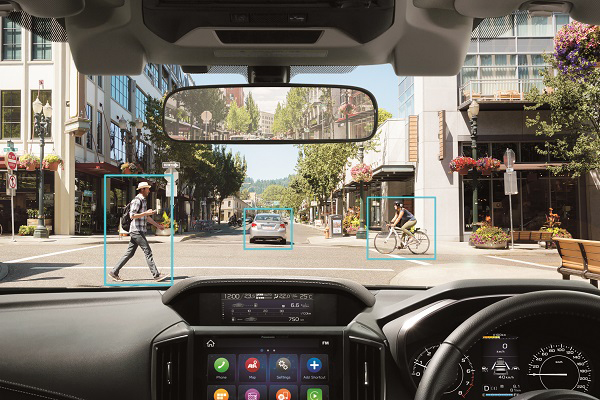WHAT MAKES A CAR SAFER? OR REDUCING THE NUMBER OF ROAD DEATHS AND INJURIES

Traditionally, vehicle safety has focussed on how a vehicle protects its occupants in a crash. Today, the safest vehicles will first help you prevent or reduce the severity of a crash, then if a crash does still occur, it will provide you and your passengers with a higher degree of protection.
ANCAP (Australasian New Car Assessment Program) independently rates the safety of cars by conducting crash tests and assessing the safety features and technologies of the vehicle. Structural protection and the ability to actively avoid a crash are essential to achieve the highest 5-star ANCAP safety rating.
Trent Moran, Product Manager at Duttons Subaru explains, “Vehicle manufacturers are designing and building today's vehicles with a good balance of protective and preventative safety to provide the best chance of survival in a crash. You may even avoid one altogether.”
PREVENTATIVE SAFETY
Preventative safety features are on the cutting edge of road safety technology. These safety measures are designed to prevent accidents by proactively detecting potential dangers on the road in advance:
Automatic emergency braking. The car detects a slow-down or stop in traffic ahead and alerts the driver. If the driver takes no action, the brakes will slow the vehicle down gradually.
Vehicle dynamics control. A network of sensors constantly monitors engine speed, gear selection and brake positions. If the vehicle dynamics control system detects a loss of control, it applies braking to individual wheels to regain vehicle stability.
Forward collision warning. Forward-facing cameras scan the road ahead and alert the driver to danger.
Adaptive cruise control. Adaptive cruise control allows drivers to set the speed limit whilst responding to other road users, braking when necessary to maintain a safe driving distance.
Lane departure warning stops drivers from drifting over into other lanes. Some instances of the technology can even help the driver avoid gutters and drains.
Lane-keep assist recognises line markings on both sides of your lane to adjust your position.
Blind-spot monitoring actively monitors the blind spot over your shoulder, reporting hazards with a warning light.
Rear-cross traffic alert. This technology allows drivers to reverse out of car parks and driveways more effectively, by warning you that another car is approaching.
“Subaru also has Reverse Automatic Braking that applies the brakes if a rear obstacle is detected,” says Trent. “The newest safety features include their revolutionary Driver Monitoring* System which uses facial recognition technology to monitor the driver for signs of fatigue or distraction and warns them if they’re not focused forward. In addition, the panoramic 360-degree view monitor features a wide-angle camera to produce a top-down/birds-eye view of the vehicle and its surroundings is now available on the All New Crosstrek”
PROTECTIVE SAFETY
Protective safety features lessen the chance of death and serious injury in instances where an accident is unavoidable:
Airbags deploy when the car rapidly decelerates beyond braking speed. In addition, energy-absorbing seatbacks and headrests cushion shocks to the head and neck to reduce the risk of injury and whiplash.
Seatbelts which lock into place, prevent passengers from ejection and impact.
Anchor points that secure child restraints
Vehicle structure advances including greater strength, safety cages, crumple zones and improved crash shock absorption
Together, preventative and protective safety features work towards keeping you safe and ultimately reducing the number of road deaths and injuries.
* Driver Monitoring System is available on most models
